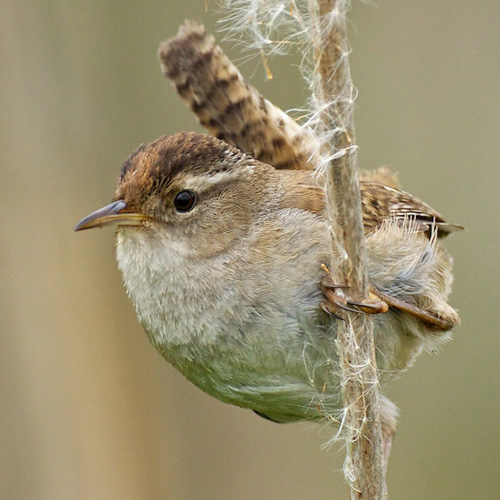Habitat
Marsh Wrens inhabit wetlands with both cattail and bulrush, and have also been known to nest in emergent hardhack.
Behavior
Marsh Wrens glean food from the stems of dense marsh vegetation, from the ground, or on the water's surface. They usually forage out of view, hopping up for brief moments when they can be seen by patient observers. Like other wrens, male and female Marsh Wrens of all ages will destroy the eggs of their own and other species. Washington's Marsh Wrens build between 14 and 22 incomplete 'dummy' nests, which may help with predator avoidance. The dummy nests are also used throughout the year for shelter, and dummy nests of resident birds tend to be sturdier than dummy nests of migrants who do not use them for winter shelter. In fact, western Washington Marsh Wrens, which use their dummy nests for shelter in the winter, spend significantly more time building them than their eastern Washington counterparts who migrate and don't need the winter roosts. Male Marsh Wrens have up to 200 songs, which they sing almost continuously during the breeding season. Their songs resemble the sound of a sewing machine.

No comments:
Post a Comment